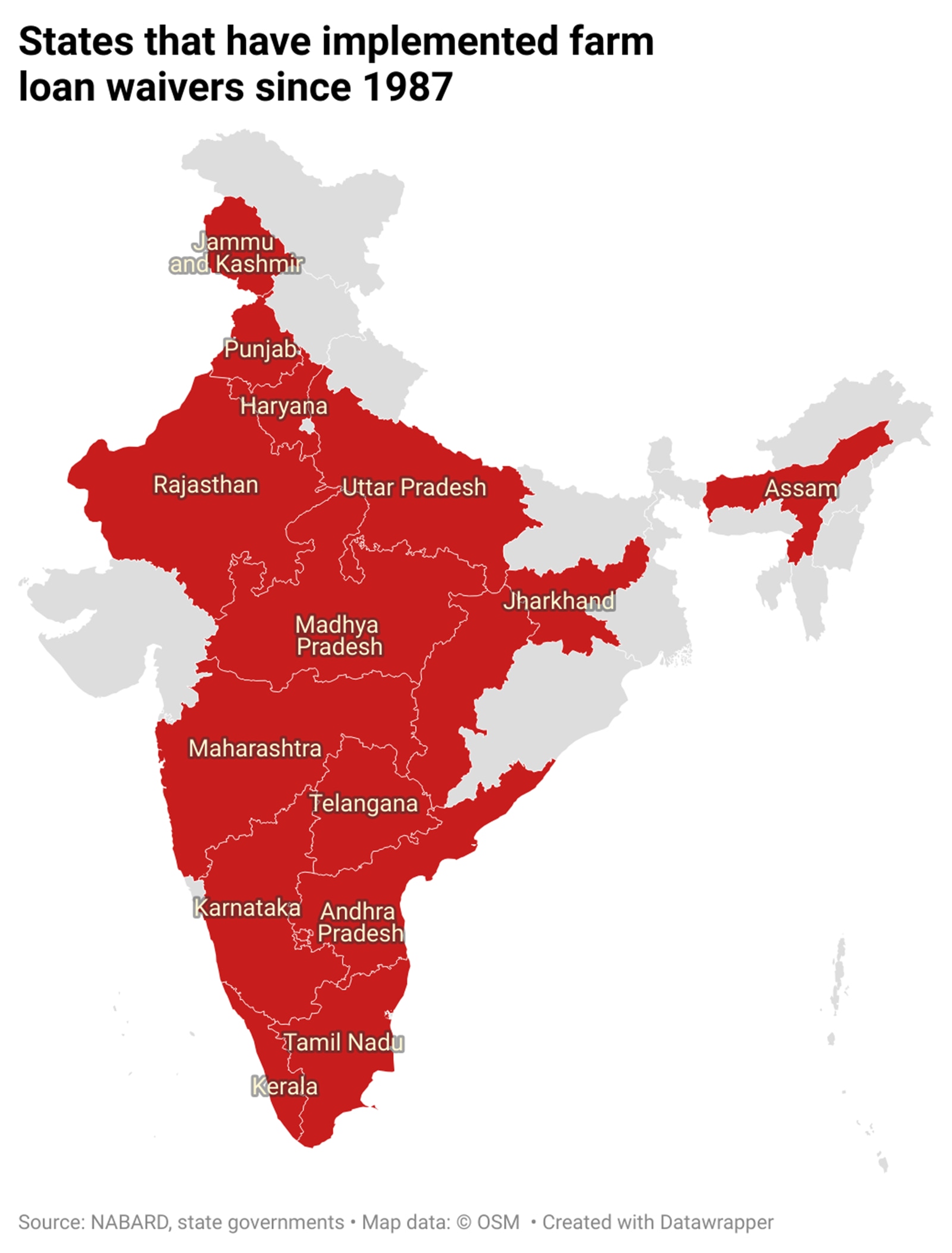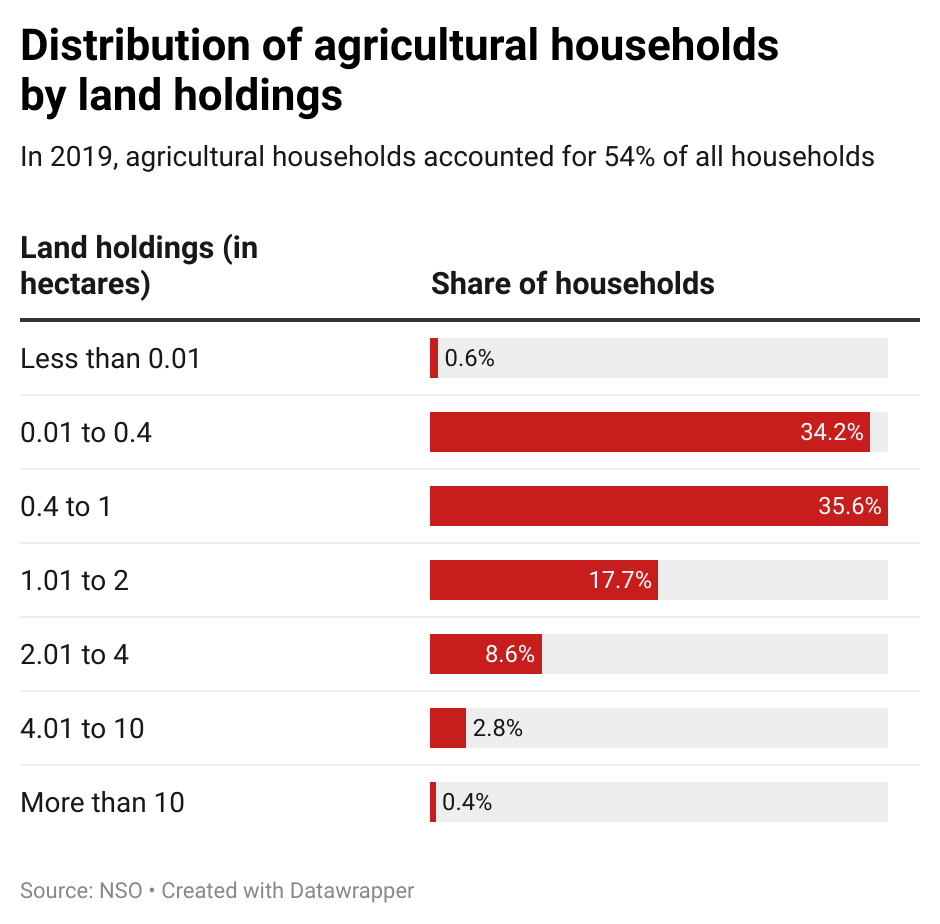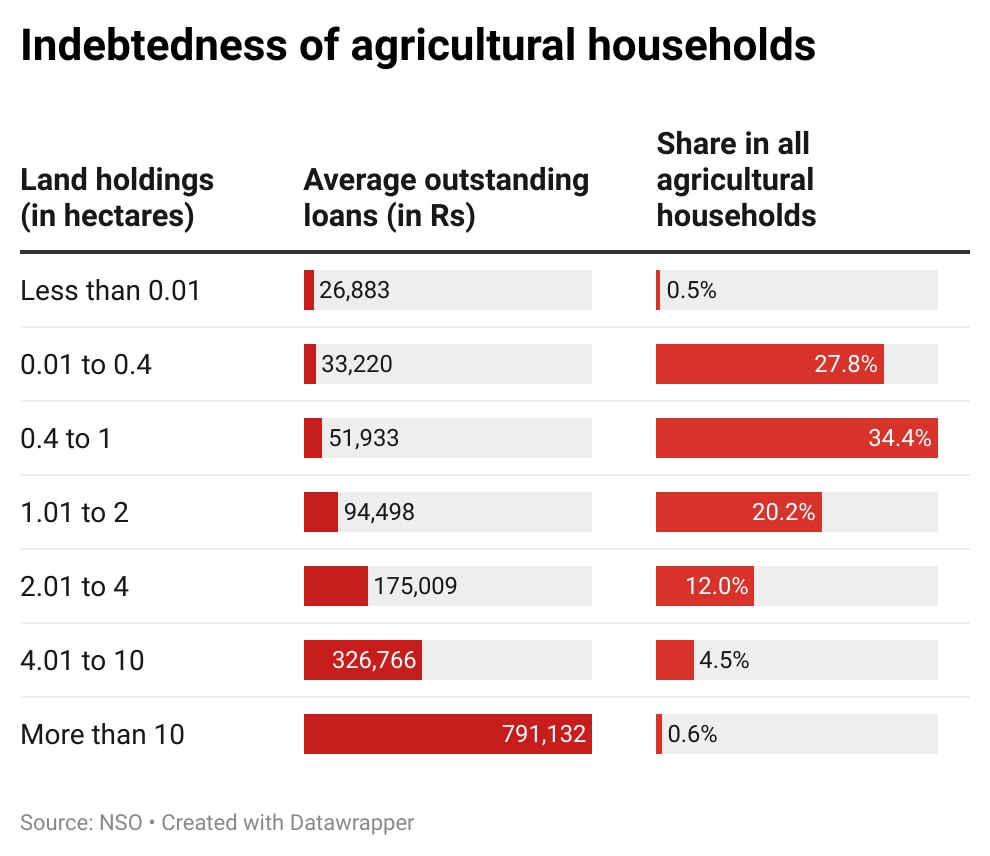Farmers’ protest: Loan waiver among demands, how Centre has allowed it only twice
V P Singh government and UPA-1's were the only times the Centre announced a version of loan waiver. However, given low incomes and high indebtedness, state governments keep waiving farm loans or promising it.
 Farmers gathered at Shambhu border of Punjab-Haryana on February 20 (Express Photo by Harmeet Sodhi)
Farmers gathered at Shambhu border of Punjab-Haryana on February 20 (Express Photo by Harmeet Sodhi)The demands of the farmers protesting at several places along the Punjab-Haryana border, with the agitation now spreading to other areas, include a waiver of farm loans.
Though this demand keeps raising its head, the fact is that the Central government has waived off farm loans only twice since Independence, and never given a blanket waiver. Waivers have primarily been a tool used by state governments, including as promises ahead of elections, particularly given the high levels of indebtedness among agricultural households.
Only two Central loan waivers to date
The first Central government loan waiver was under the Agricultural and Rural Debt Relief Scheme, introduced by the V P Singh-led National Front government in the 1990-91 Budget. The National Front had come to power then with the support of the BJP.
“Over the years, poor farmers, artisans and weavers have accumulated debt which they are unable to repay. They have been caught up in a vicious circle of indebtedness and low incomes, which keeps them in perennial poverty. In order to relieve our farmers from the burden of debt, an assurance was given in the National Front’s manifesto that relief will be provided to farmers with loans up to Rs10,000,” announced Union Finance Minister Madhu Dandavate.
The Opposition, including the Congress, criticised the scheme during debates in Parliament, with some calling it a “mathematical somersault” and others saying the waiver was too small or targeted too few farmers.
After an initial allocation of Rs 1,000 crore, the scheme ended up costing the government Rs 7,825 crore and necessitated additional loans from the Reserve Bank of India (RBI) for states to cover their share of the waiver. The scheme benefited 3.2 crore farmers, accounting for 53% of borrowers in the agricultural sector, and wiped away a third of the outstanding farm loans, as per a National Bank for Agriculture and Rural Development (NABARD) report.
The next Central waiver came only 28 years later, in the 2008-09 Budget under the Manmohan Singh-led UPA I government. The Agriculture Debt Waiver and Relief Scheme sought to clear all overdue loans taken between 1997 and 2007 by farmers. While it offered a 100% waiver to small and marginal farmers, others were given relief up to Rs 25,000 or a 25% waiver (whichever was lower).
The programme was significantly larger than the one in 1990 – it cost the government more than Rs 52,000 crore and is estimated to have benefited 3.7 crore farmers. It is also believed to have played a big role in the UPA’s return to power for a second term.
This time, the BJP that was in the Opposition joined the criticism of the scheme as “bad politics” and “bad economics”, and said it did not take into consideration a majority of the farmers, who did not have access to institutional credit or had taken loans unrelated to agriculture. While some questioned the quantum of the outlay, others said it wasn’t enough as not all farmers were eligible for a waiver.
Generally, economists have been critical of farm loan waivers, deeming them short-sighted solutions in the absence of long-lasting sector-wide reforms. Studies of farm loan waivers, including by the NABARD, show that even farmers who wouldn’t default on their loans otherwise are likely to do so in anticipation of future waivers. Research also suggests that waivers have little impact on improving productivity, investment, wages or consumption across the sector.
States frequently waive loans
While the Centre has rarely gone down this route, state governments have frequently used farm loan waivers for political gain before or during polls.
Haryana, with a large agricultural population, was among the first to employ farm loan waivers. In 1987, the Lok Dal government led by Chaudhary Devi Lal that had just won the Assembly elections waived off up to Rs 10,000 in loans for every farmer, ignoring opposition by the Centre and RBI. To raise the funds, amounting to about Rs 228 crore (Rs 2,000 crore-plus, as per today’s prices) against a budgeted cost of Rs 60 crore, the state issued bonds and raised taxes. About 12 lakh farmers benefited from the scheme.
This gave impetus to other states and the Centre to follow suit, though with differing eligibility criteria for the loan waivers. In 1996, the DMK government in Tamil Nadu, for instance, waived off interest on the loans but not the principal sum.
The 2000s saw a spate of farm loan waiver programmes, including Kerala’s Farmers’ Debt Relief Commission Act, 2006, which is still active today. The Act, which was introduced during a period of high agricultural indebtedness and farmer suicides in state, empowers a committee to issue waivers, partial or complete, on a case-by-case basis including for non-institutional loans.
After a brief lull between the 2008 Central scheme and 2012, there have been at least 29 instances of state-level waivers. For some states, including Telangana and Tamil Nadu, waivers are almost an annual affair.
 States that have implemented farm loan waivers since 1987
States that have implemented farm loan waivers since 1987Loan waivers and poll impact
Though there is no clear correlation between the two, over the past decade, parties have generally won state elections after implementing or promising farm loan waivers ahead of polls. According to the NABARD database, between 1987 and 2020, parties that had announced or introduced a loan waiver scheme went on to lose only 4 elections out of 21.
More recently though, the promise of farm loan waivers or other farmer-related schemes alone has not been enough to win elections, despite farmers making up a sizeable chunk of the electorate in most states.
For example, in four of the five states that saw Assembly elections towards the end of 2023, while waivers were promised by parties in Madhya Pradesh and Telangana, other farmer-related programmes were promised by parties in Chhattisgarh and Rajasthan.
The then ruling Bharat Rashtra Samithi (BRS) in Telangana even waived off loans amounting to Rs 5,800 crore for 16 lakh farmers months before the elections, but ended up losing to the Congress. The latter had promised an annual payment of Rs 15,000 to farmers and Rs 12,000 to farm labourers.
In Madhya Pradesh, the Congress revived its farm loan waiver promise from 2018, when it had won narrowly and held power briefly. Still, it could not stop the BJP’s landslide victory.
Notably, while the BJP has tended to stay away from such promises, in the months leading up to the polls in Madhya Pradesh, its government waived off interest on farmers’ loans, amounting to Rs 2,200 crore.
More than half of farming families in debt
The latest available data on farmers’ incomes and debts, from a National Statistical Office report dating back to 2019, found that the average agricultural household earned Rs 10,218 per month, compared to the national average per capita monthly income in 2018-19 of Rs 10,533.
But earnings vary considerably depending on the size of the land holdings. Almost 70% of agricultural households have between 0.01 to 1 hectares of land, making them marginal farmers.
 Distribution of agricultural households by land holdings
Distribution of agricultural households by land holdings
For those with 0.01 to 0.4 hectares of land, the average monthly income is Rs 7,522, while those with 0.4 to 1 hectares of land, earn Rs 8,571 on average – both well below the average per capita income.
Farmers with holdings of more than 10 hectares earn an average Rs 60,758 per month, but they constitute only 0.4% of all agricultural households.
 Monthly income of agricultural households
Monthly income of agricultural households
The farmers with the smallest land holdings and the lowest monthly incomes also account for the largest chunk of indebted households. Those with holdings between 0.01 and 1 hectares account for 62.2% of indebted agricultural households. While the average debt for all agricultural households stood at Rs 74,121 in 2019, families with 0.01 to 0.4 hectares of land had outstanding loans of Rs 33,220 and those with 0.4 to 1 hectares of land had outstanding loans of Rs 51,933. Overall, 50.2% of farming households are in debt.
 Indebtedness of agricultural households
Indebtedness of agricultural households
Under the Modi govt
While Prime Minister Narendra Modi has not introduced a farm loan waiver in his two terms in power, one of his government’s flagship schemes is PM Kisan Samman Nidhi (or PM KISAN). Launched in 2018, months ahead of the 2019 general elections, the PM-KISAN scheme ensures three instalments of Rs 2,000 every year to farmers with land holding of up to 2 hectares.
Modi targeted the Opposition and made it a point to differentiate it from the previous Congress government’s farm loan waiver scheme, saying: “Yeh saare maha-milawati log aise hi hain. Congress ho, SP ho, BSP ho, inke saare chele-chapate hon. Woh kya karte hain? Bas 10 saal mein ek baar unko kisan yaad aata hai (These people, be it in the Congress, SP, BSP, or their associates, these mish-mash of parties, what do they do? They remember farmers only once in 10 years)… Then they start getting the fever of waiving off loans. They have learnt the gimmick of giving lollipops and getting votes by cheating farmers,” he said.
Incidentally, the Modi government’s PM-KISAN scheme followed the Congress’s win in the December 2018 Assembly polls in Rajasthan, Madhya Pradesh and Chhattisgarh, where it had promised farm loan waivers.
In the first disbursement under PM KISAN, 3.2 crore farmers received a total of Rs 6,323 crore. At its peak in 2021-22 (the Covid period), more than 10 crore farmers got Rs 67,032 crore for the year. In the latest disbursement last November, 8.1 crore farmers received Rs 18,610 crore.
- 01
- 02
- 03
- 04
- 05































